Sigma 28-70mm f2.8 DG DN Contemporary Lens Review:
Zoom lenses in the 24 to 70ish range are pretty popular because they cover so much that they make great everyday lenses. So, it makes sense that manufacturers always seem to have at least a couple in their arsenal of lenses. Sigma definitely has some nice zooms in this range, and one that was recently introduced is the 28-70mm f2.8 DG DN Contemporary lens. What makes this lens intriguing is that even though it has a fixed maximum aperture of f2.8, which is pretty fast, it’s still a very compact lens. Let’s take a closer look at it.
Sigma 28-70mm f2.8 DG DN Contemporary Lens Build Quality:
Since I mentioned the size, let’s get into that first. When the 28-70mm f2.8 DG DN Contemporary lens was first announced, I was definitely intrigued but after seeing it in person, and holding it in my hands, I have to say, I am even more impressed. Currently, Sigma says that this is the smallest and lightest lens in its class. By going up a bit from a 24mm, Sigma was not only able to produce a lens that is cheaper but also make one that is much more compact than a traditional 24-70mm f2.8 all while keeping the fixed maximum aperture of f2.8. The lens measures just 2.8 x 4″ / 72.2 x 101.5 mm, and uses a 67mm filter. It truly is considerably more compact than the Sigma 24-70mm, and I know this because I had both lenses with me at the time to review.
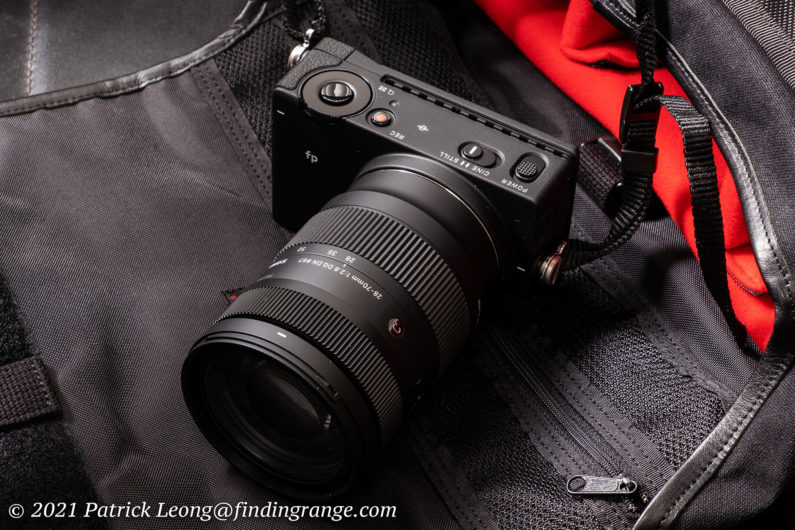
↑ The Sigma 28-70mm f2.8 with the Sigma fp L.
In some ways, the 28-70mm f2.8 DG DN Contemporary lens almost feels like a prime to me in terms of handling. For instance, I usually feel a little awkward using any zoom lens in this range for street photography but with with the 28-70mm, I felt fine. Even when you zoom all the way to 70mm, the lens isn’t that large. I was using the Sigma 24-70mm, which is a brilliant lens (review coming soon) but I clearly felt the difference between the two in terms of handling and overall size. The 28-70mm even weighs just 16.6 oz / 470 g, so it’s definitely a lens that you can use all day without feeling fatigue.
The zoom is also great with a bunch of different camera bodies. At the time I was reviewing the 28-70mm, I was also testing the Panasonic S1 and the Sigma fp L. The Panasonic is a larger camera as some of you know but it works great with the 28-70mm. The lens also feels great with an ultra compact body like the fp L as well. It’s worth noting that this zoom would also make an excellent lens on smaller APS-C bodies like the Leica CL, which thanks to the crop factor, would give you a focal length range of 42-105mm.
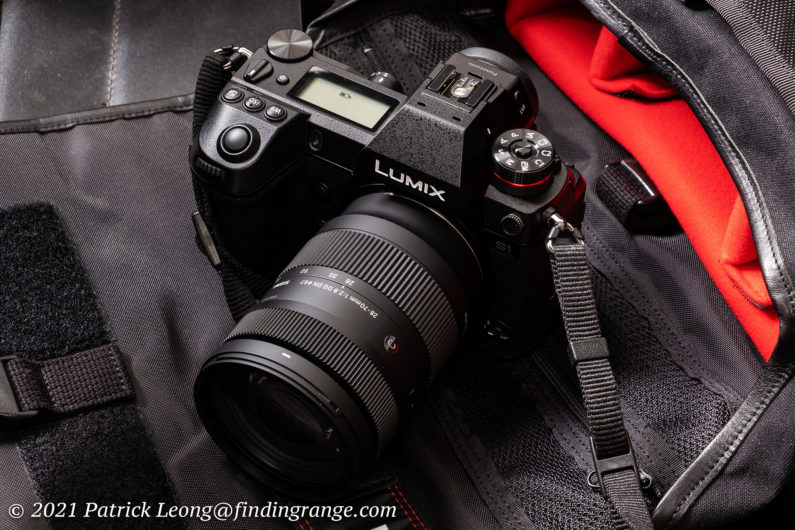
↑ Here’s the Panasonic S1 with the Sigma 28-70mm f2.8 DG DN Contemporary lens.
As for overall build, it’s excellent. The lens is made of a polycarbonate called TSC (Thermally Stable Composite), which has a comparable level of thermal shrinkage to aluminum, and it feels very solid in the hands. There’s no creaking or any signs of inferior workmanship. The zoom ring feels smooth, and there’s just the right amount of resistance as I’m rotating it giving me good feedback. The manual focus right is also smooth. Furthermore, the 28-70mm has a brass bayonet mount, and it is dust and splash resistant, which is applied to the mount. There’s also an oil and water repellent coating applied to the front element. The only thing that might be an issue for some is that there is no image stabilization. However, I don’t consider this anywhere near a deal breaker because the lens is just so easy to handle.
Lastly, the 28-70mm also comes with a petal shaped lens hood. In addition to flare protection, this is great to have when you want a bit more protection for your front element.
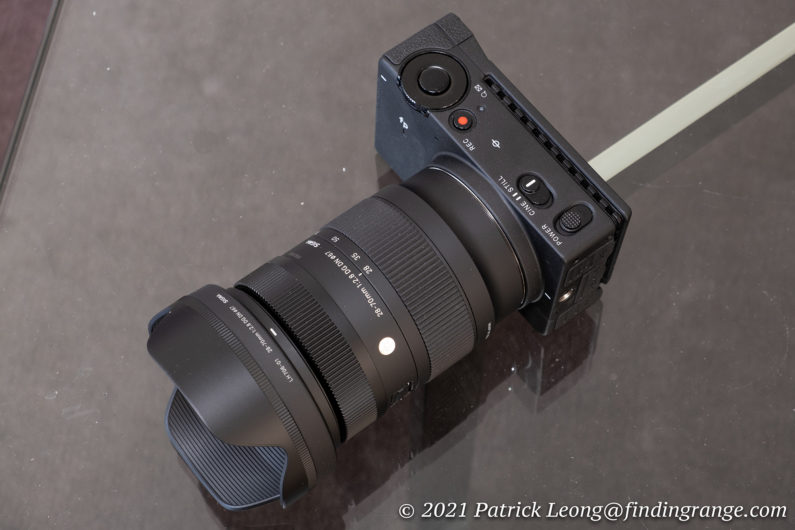
↑ The Sigma 28-70mm f2.8 does come with a petal shaped lens hood.
Sigma 28-70mm f2.8 DG DN Contemporary Lens Autofocus:
As for the autofocus, the 28-70mm f2.8 DG DN Contemporary lens uses a stepping motor that is definitely responsive. It’s plenty fast, and accurate. It’s also near silent. The camera usually plays a part in autofocus performance, and as I mentioned earlier, I was testing this lens with both the S1, and the fp L. It works great on both cameras.
I’m primarily a fashion and boudoir photographer, so I rely on face detection in cameras quite a bit, so I was happy to find out that this lens performs quite well when I used this feature in my camera. It locks right on to the faces, and I always get tack sharp eyes, which is primarily what I want.
To top it off, the 28-70mm f2.8 DG DN Contemporary lens does focus very closely as well. The minimum focus distance at the 28mm focal length is 7.5″ (1:3:3 magnification), while at 70mm, it is 15″ (1:4:6 magnification). This adds even more versatility to this zoom.
Sigma 28-70mm f2.8 DG DN Contemporary Lens Image Quality:
In terms of image quality, the 28-70mm f2.8 also delivers the goods. In fact, Sigma says that this zoom offers the same optical performance as the 24-70mm F2.8 DG DN Art lens, which as we know, is designed to be their best, and for pro use. That’s pretty impressive considering how much smaller this lens is as well.
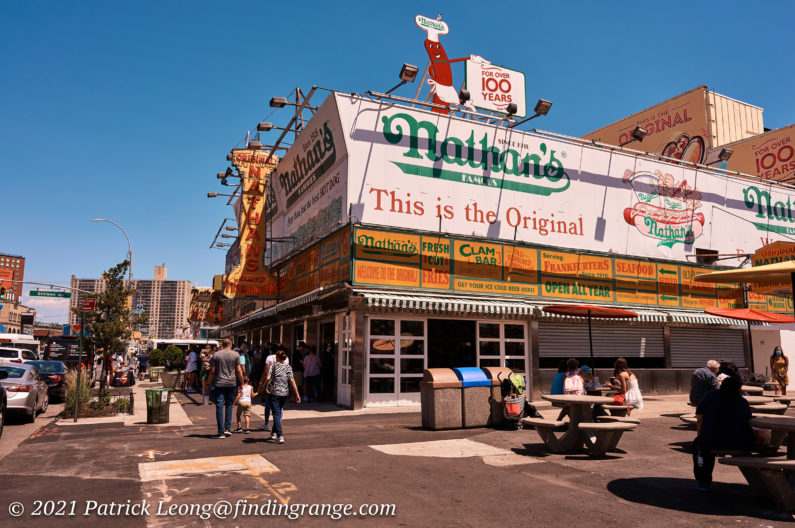
↑ This was the first time I was back at Nathan’s in Coney Island since Covid hit but I didn’t get anything because the lines were way too long haha. I used the fp L and the settings were 160 ISO, f8, and the 28mm focal length.

↑ Here’s a photo of the Verrazzano-Narrows Bridge taken with the S1. The focal length was 43mm with the settings being f8 and 100 ISO.
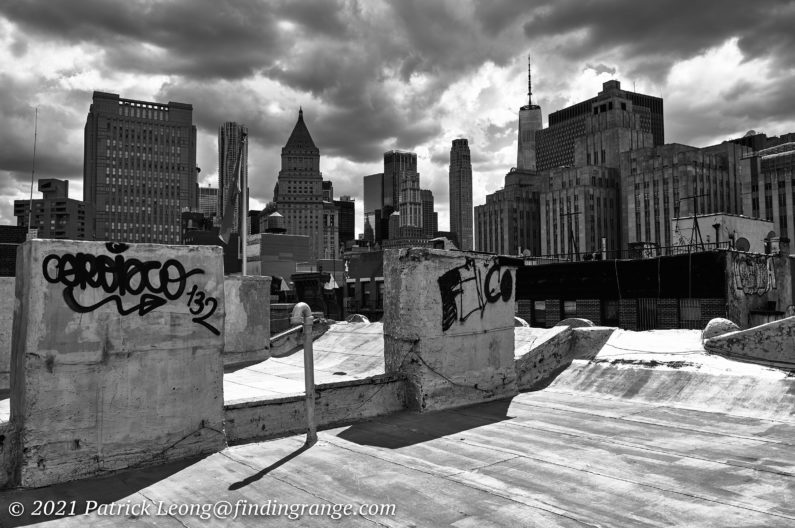
↑ Here’s a photo taken with the fp L, and the focal length was 28mm. I used 125 ISO and f8.
The performance starts out with sharpness, which is excellent. At f2.8, it’s tack sharp in the center with the corners and edges being only a touch softer. As you stop down, the lens sharpens up a bit. If you’re looking for optimum sharpness, I would say it’s around f8 but keep in mind that it’s plenty sharp at all the aperture settings, so you’d have to do a lot of pixel peeping to see any real difference. Bottom line is this is a lens that you should feel completely comfortable using throughout its aperture range because you’ll definitely get superb results. Keep in mind that not only was I using this with the S1 but I was also using it with the Sigma fp L, which has a 61 megapixel sensor.

↑ This was taken with the Sigma fp L and it’s 61 megapixel sensor. Setting were 100 ISO and f8. The focal length used was 30.5mm.
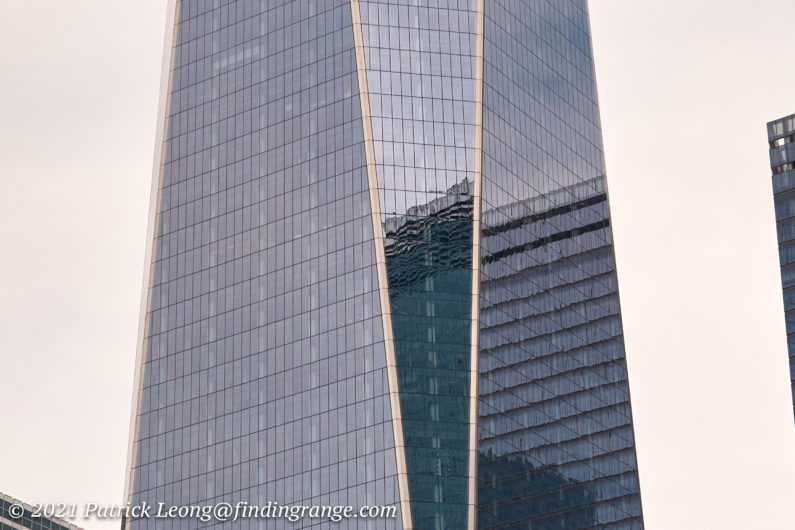
↑ Here’s a 100% crop of the photo above.
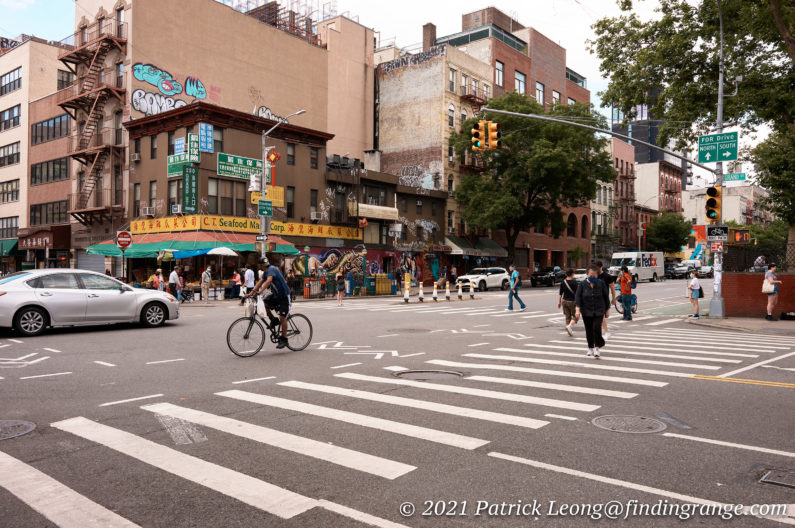
↑ Here’s another photo taken at f8 with the 28mm focal length. 640 ISO was used along with the Sigma fp L here as well.
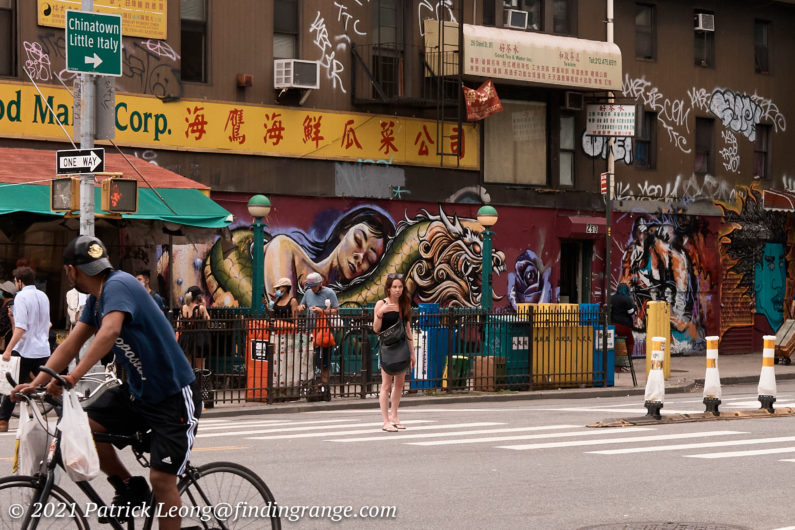
↑ Here’s a 100% crop of the photo above. Notice how you can read even the smallest words in this photo even though they are technically not even the focus points. Keep in mind that this was taken using 640 ISO as well, not 100 ISO.
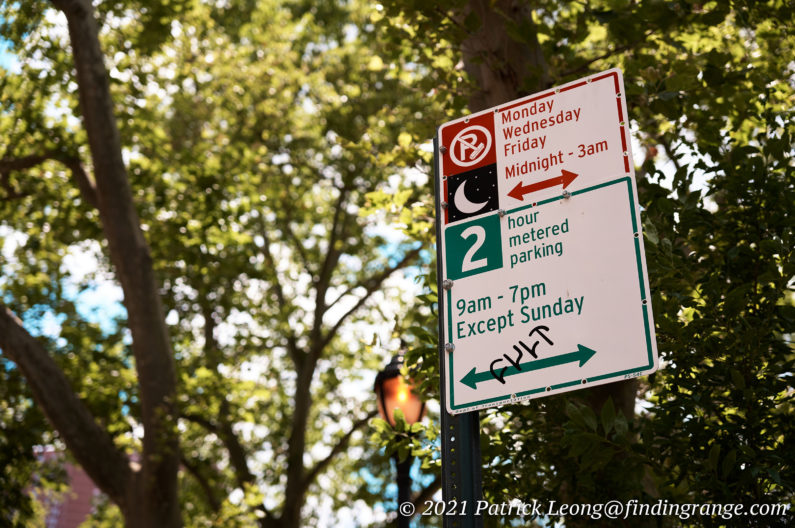
↑ This was taken with the 51.2mm focal length, and the settings were 100 ISO and f2.8.
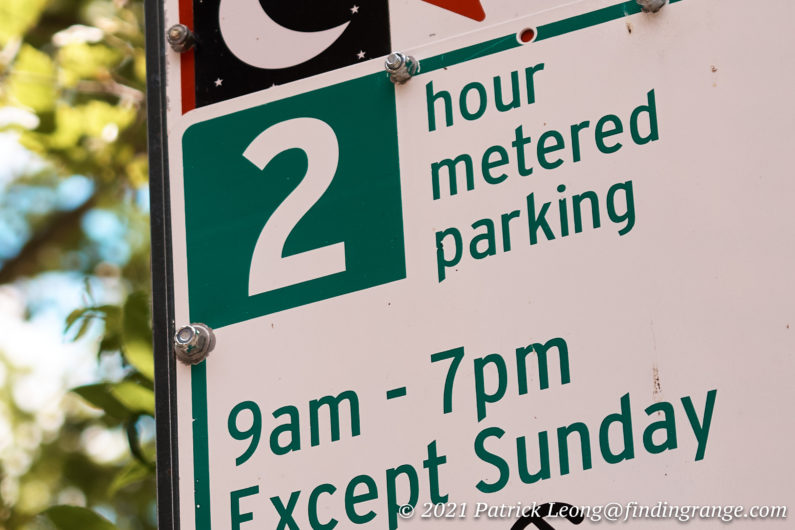
↑ Here’s a 100% crop of the photo above.
Other features of the 28-70mm f2.8 DG DN Contemporary lens include nice contrast and color rendering. This lens does have Super Multi-Layer Coating, and Nano Porous Coating, which helps with flare for high-contrast results in backlit conditions. It apparently works because I didn’t have much issue with any flare. There is some vignetting at f2.8 but most of it is gone by f4. It’s completely clean at F5.6. There’s nothing out of the ordinary here.
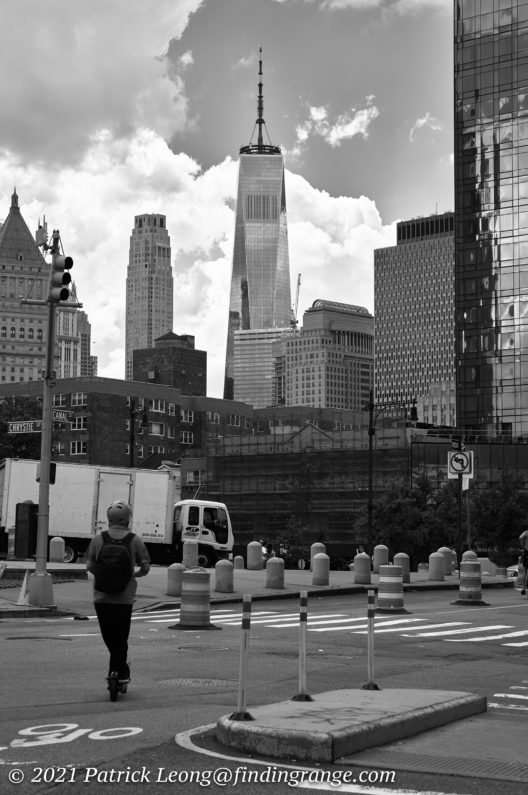
↑ This was taken somewhere in Chinatown using the fp L, and the 70mm focal length. The settings were 200 ISO and f8.
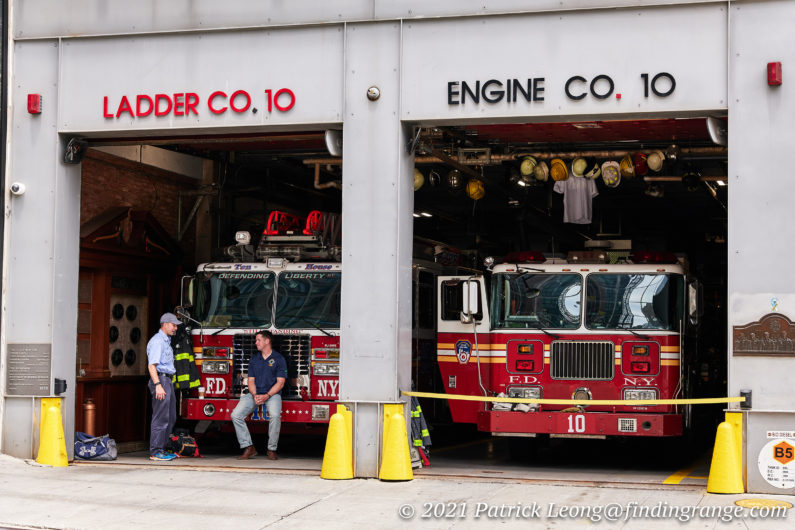
↑ I used the S1 here. The settings were 400 ISO and f5.6 with the focal length being 70mm.
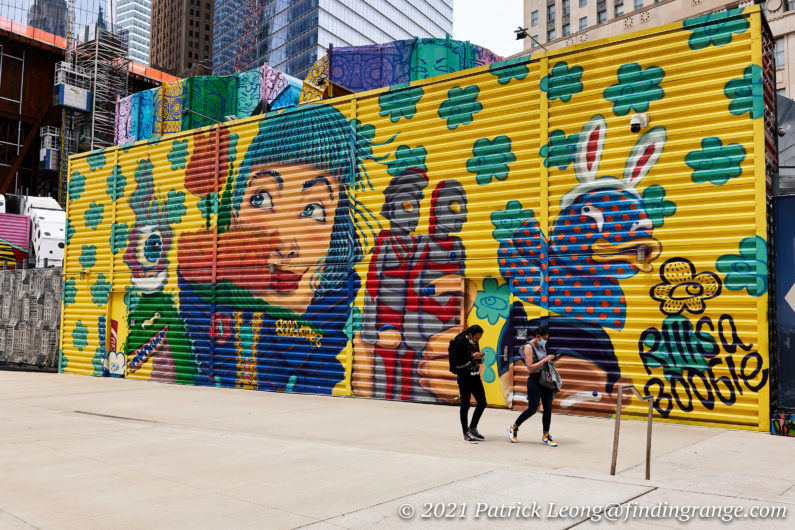
↑ I used the Panasonic S1 and had the Sigma 28-70mm f2.8 set at the 31mm focal length. This was taken at f8 and 160 ISO around the WTC area in Manhattan.
Sigma 28-70mm f2.8 DG DN Contemporary Lens Bokeh:
As for shallow depth of field and bokeh, I’ve always been a fan of what comes out of all the Sigma lenses that I’ve reviewed, and the 28-70mm is clearly no exception. This isn’t an f1.4 lens but at f2.8, you can get images with pretty decent bokeh. The depth of field can be nice and shallow, especially since this lens is able to focus pretty closely. Thanks to the rounded nine-blade diaphragm, the bokeh quality is also very smooth and inviting.
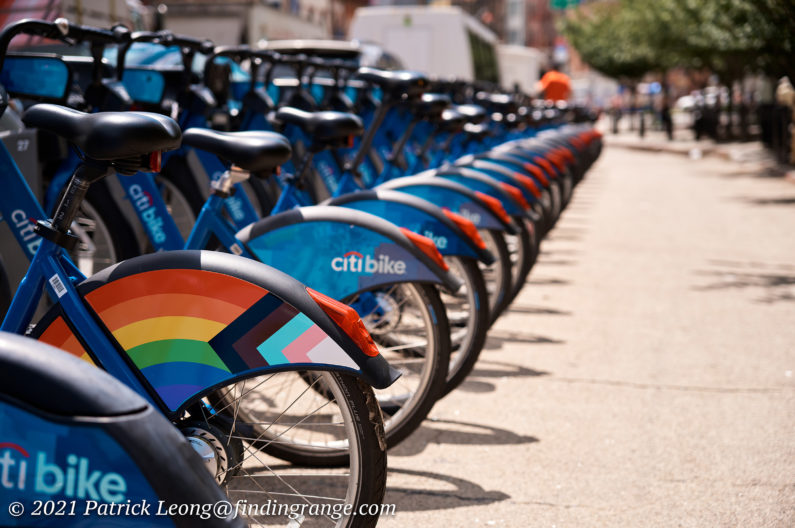
↑ This was taken with the fp L at f2.8. I used the 52.1mm focal length, and 100 ISO.
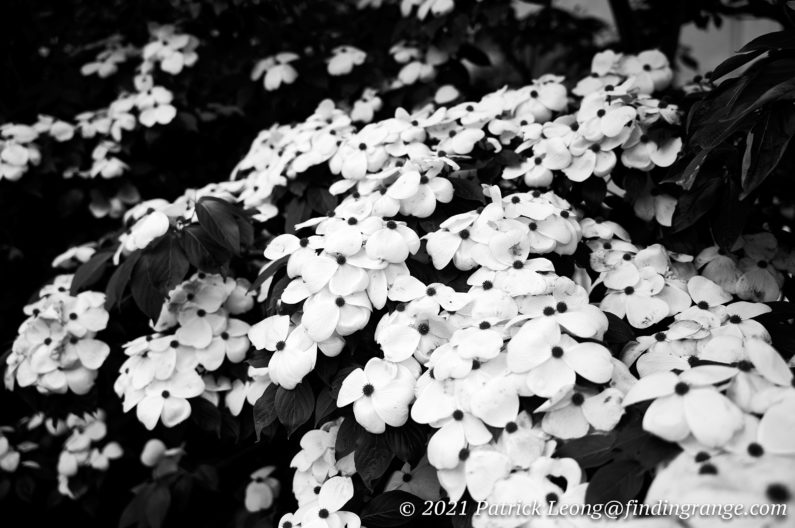
↑ In this photo, I used the Sigma fp L and the 28-70mm f2.8. The focal length used was 33.5mm. The settings were f2.8 and 100 ISO.
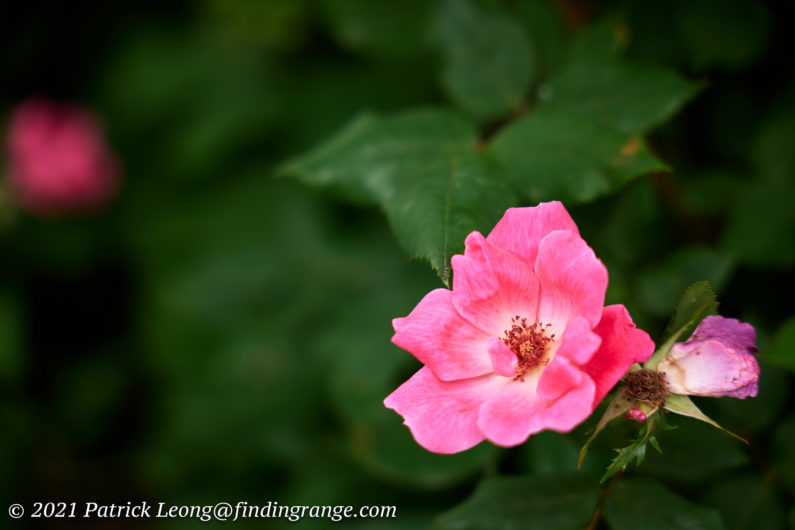
↑ Here’s a close up shot of a flower taken with the S1. The focal length was 70mm with the settings being f2.8 and 100 ISO. As you can see, great bokeh.
Pros And Cons:
Pros:
- Portable, compact, and light making it a great lens to carry around everywhere with you.
- Well made.
- Dust and slash resistant.
- Fast and accurate autofocus, which is also near silent.
- Excellent image quality.
- Decent bokeh.
- Great price.
Cons:
- For some, lack of image stabilization.
- 28mm may not be quite wide enough for some.
Sigma 28-70mm f2.8 DG DN Contemporary Lens Verdict:
If you’re looking for a versatile lens that really delivers the goods without breaking the bank, the Sigma 28-70mm f2.8 DG DN Contemporary lens is a fantastic option to consider. It is compact, and light yet with a focal length range of 28-70mm, this one lens might just be all you need for a trip or an event. In addition, having a maximum fixed aperture of f2.8 not only helps you achieve a better shallow depth of field than a lens with a smaller maximum aperture, it also helps you in low light photography. Furthermore, this is a well made lens, has fast autofocus, and the image quality is excellent.
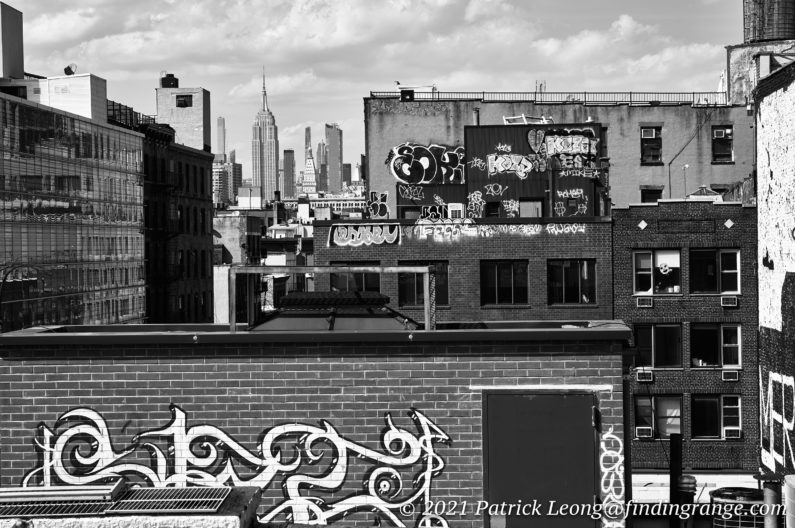
↑ Here’s a photo I took with the 70mm focal length, and the fp L. The settings were 160 ISO and f11.
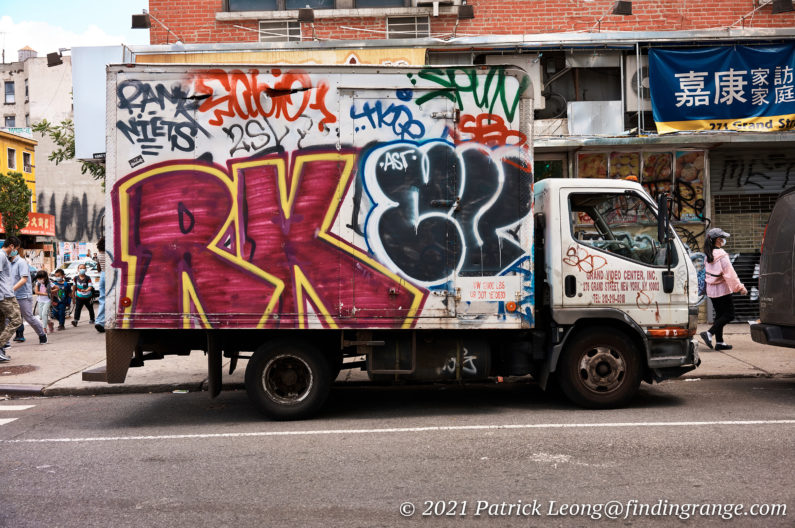
↑ This photo was taken with the fp L, and the 34.3mm focal length. The settings were 250 ISO and f4.
The only real issue that I even really encountered is there were times when I wish I had just a bit more width in terms of focal length. There were moments when I wish I had the extra 4mm from the Sigma 24-70mm f2.8 DG DN Art lens I was reviewing at the time as well. 4mm does not sound like a lot but when we’re talking about the wider end of the spectrum, it can make a larger difference. I feel like the 24-70mm gives me just that extra bit of versatility and flexibility. With that said, I’ve never been a fan of the 28mm focal length, so I’m sure that comes into play here as well.
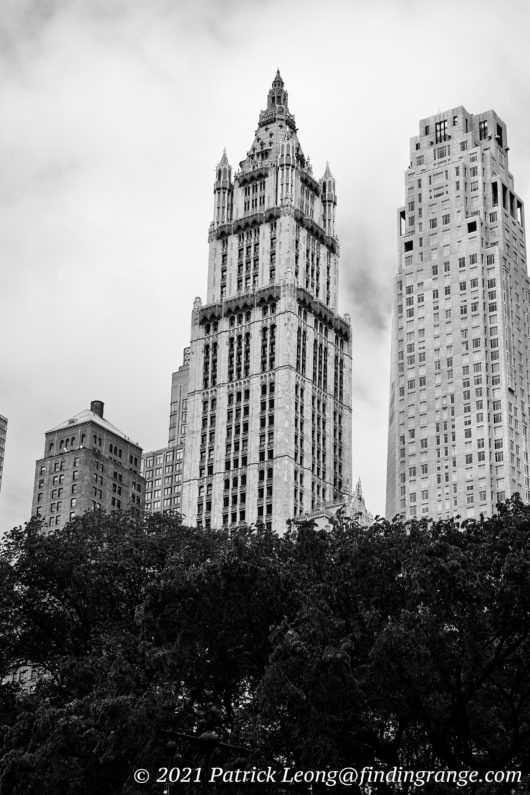
↑ Here’s a photo of the Woolworth building taken with the S1 and the 28-70mm f2.8 DG DN Contemporary lens. The focal length used here was 70mm with the settings being f6.3 and 100 ISO.
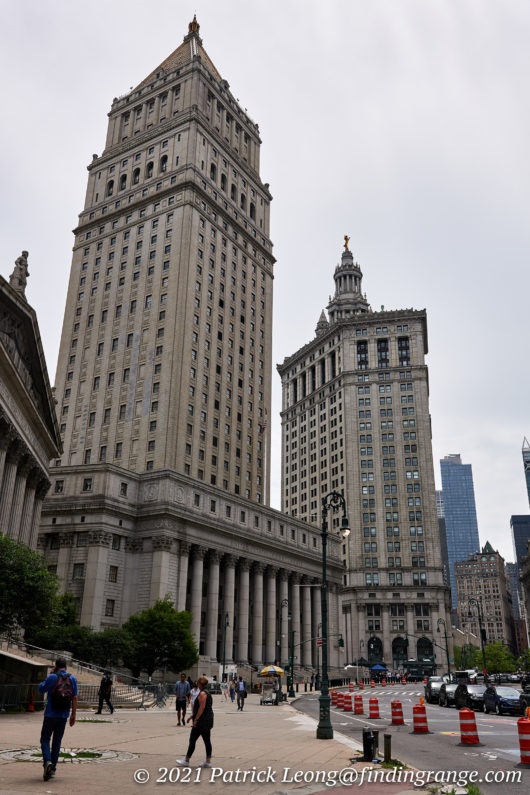
↑ This was taken around the Civic Center with the S1. The focal length used was 31mm with the settings being f7.1 and 100 ISO.
Still, there is a huge difference in size between these two lenses. Having the extra 4mm can be quite useful but the 28-70mm is just so nice in terms of size and weight (the 24-70mm weighs 835 g versus just 470 g for the 28-70mm). I seriously loved using this lens. You really feel the difference when you’re walking around and taking pictures, especially during the heat wave that we’ve experienced in New York City a few times already this summer. Plus, you save some money with the 28-70mm, which currently retails for $899 vs. the 24-70mm’s $1099 price tag. Whatever you decide, know that both lenses are fantastic, and it just really comes down to personal taste as to which focal length range is better.
The 28-70mm f2.8 DG DN Contemporary lens is superb because it is so versatile. This is a lens that has the optics to deliver you professional quality results yet at the same time, it’s small and light enough that you can use it for more casual activities like taking it on vacation or outings with friends. It also has the focal length range that is great for all types of photography, and a large enough maximum aperture that can help you be more creative, and give you more flexibility in different conditions. Honestly, this is the type of lens that we need more of in the L mount system, and I’m very happy to see Sigma coming out with them. If you’re trying to build a compact system, and are currently looking for lenses that not only are optically exceptional but also compact and versatile, this zoom should definitely be on your list of lenses to consider.
Thanks for taking the time to read my review! If you’re considering purchasing the Sigma 28-70mm f2.8, and my review helped you decide, please help support this site by purchasing from the links below or any mentioned in this review. It will not cost you anything extra. Thank you for your support!

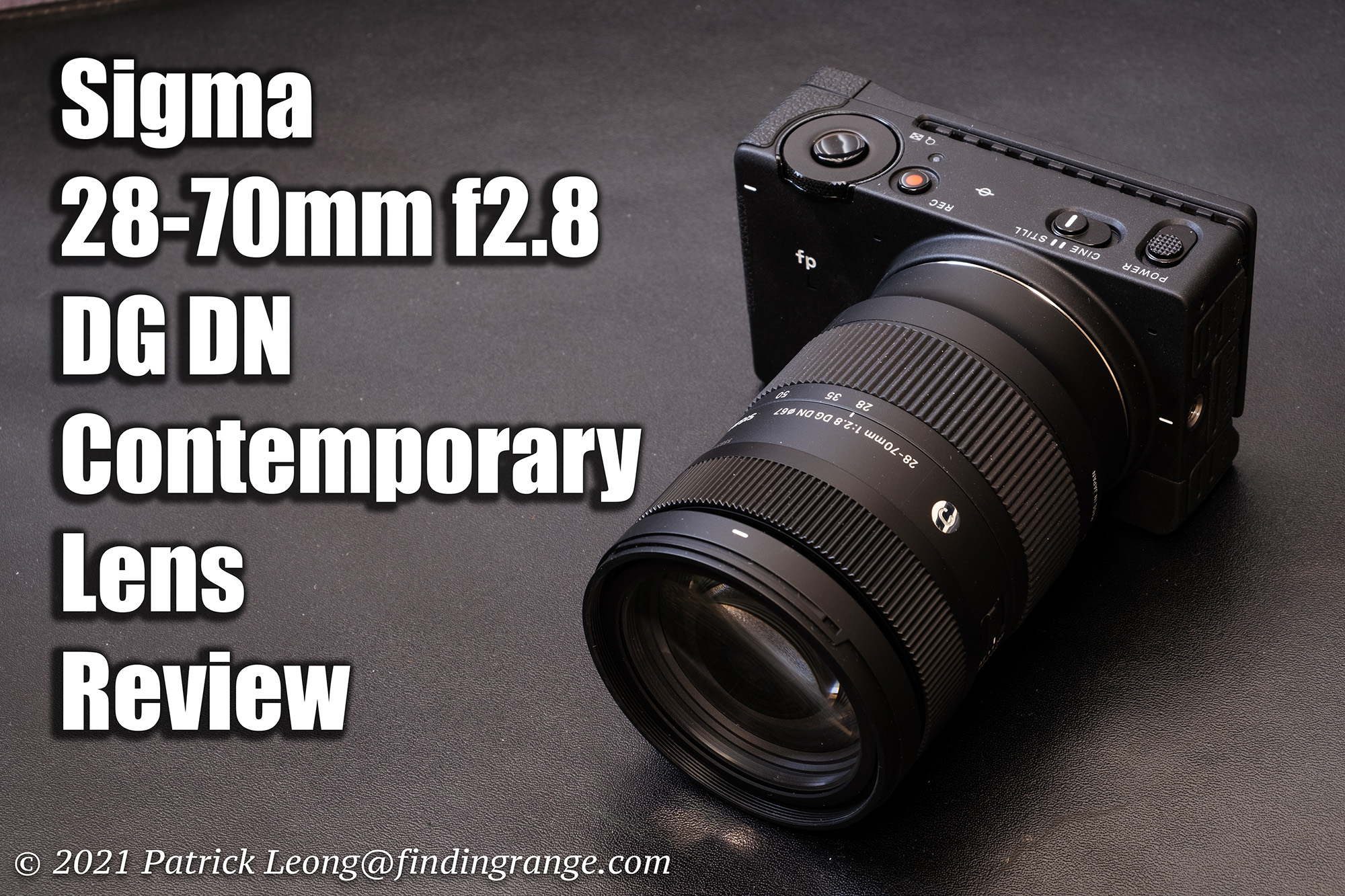
It is nice to have compact L mount lens options increasing in choice. I do not enjoy carrying a lot of fast heavy glass. This lens is a great travel lens.
Some reviews of the Sigma fp L have said the slow electronic shutter can soften images due to handheld camera movement – much more sensitive than other cameras They also showed distortion in moving subjects. Did you find this to be an issue?
Hi Brian!
Always great to hear from you. I wholeheartedly agree; I really like seeing these compact lenses coming out for L mount. Imagine this with the more compact camera offerings like this fp L I’m using or a Panasonic S5 :)?
I generally shoot the way I normally shoot with all the gear I review. From what I was able to get from the fp L, I didn’t have any issues. I don’t do much sports though but for everything else I’ve shot, the camera worked great. It’s an electronic shutter, so I did have some issue with fluorescent lighting but that’s with any electronic shutter.
The fp L has its quirks but it’s kind of Sigma’s style in a way :). They’ve always made cameras that were a bit different. I look at the big picture, and this is a full frame camera with 61 megapixels that is extremely compact. There will be some compromises because it’s tiny. But with good lenses, the image quality is pretty phenomenal.
I sent it back already, and will be writing up my review of it soon but I may see if I can get another loaner, and do some articles with just the fp L and M lenses. I was thinking if you put a pre-ASPH 35mm Cron on it (because it’s tiny), the fp L might make a great little street camera :).
Have a good night Brian, and thanks for stopping by!
Best,
Patrick
I used to own the Sigma fp but sold it when I wanted to fund a lens and thought the full frame fovean was coming soon – most likely 2023 now.
I loved the haptics and rendering of that camera. The Leica m 28/5.6 was gorgeous in rendering on it and perfect for street photos. I also loved the stunning and tiny Voigtlander 50/3.5 on it.
Hi Brian,
Yes, I definitely remember you telling me that. A foveon sensor would be an absolute game changer I think. Not only are Sigma lenses superb but imagine being able to use a camera like that with the Panasonic and Leica lenses as well?
For years now, I’ve been actually looking at the Sigma Quattro dp2. I’ve been so tempted to buy one…I may see if I can get a loaner in to review. It’s an older camera but there is just something really special about those foveon sensors.
As for the 28mm f5.6, I’m actually working on photos from that lens right now haha. It’s one of my favorite M lenses. I haven’t tried the Voigtlander 50mm f3.5 yet but I actually had plans of getting one in to review.